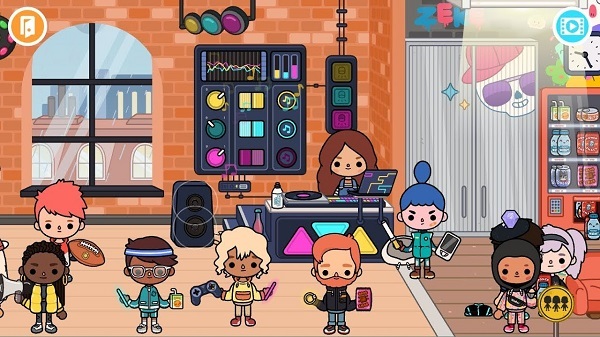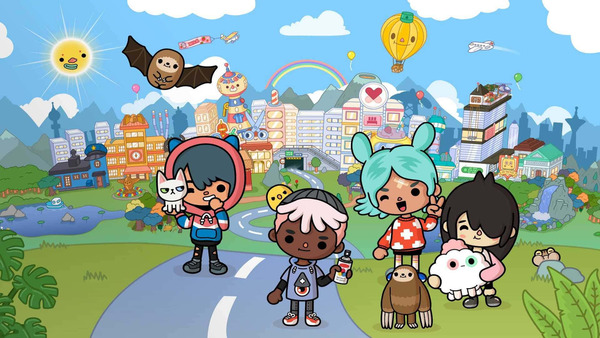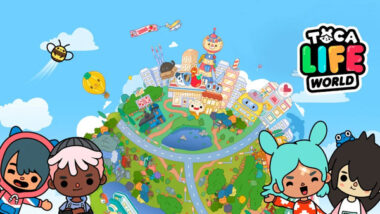Introduction
Toca Life has revolutionized the way children and young players engage with digital storytelling. Unlike traditional games that provide linear narratives, Toca Life empowers players to create their own stories using various characters, settings, and scenarios. However, this freedom comes with its own set of challenges. Players often struggle with effectively crafting engaging and coherent narratives that capture their imagination. This article will explore the complexities of storytelling within Toca Life, offering insights, strategies, and examples to help players enhance their storytelling skills.
The Unique Nature of Toca Life’s Storytelling
Toca Life distinguishes itself from conventional games through its open-world design, allowing for limitless storytelling possibilities.

Toca Life distinguishes itself from conventional games through its open-world design, allowing for limitless storytelling possibilities.
Non-linear Narrative Structure
In Toca Life, players are not bound by pre-defined plots. Instead, they create narratives based on their interactions with characters and environments. This non-linear approach encourages creativity but can also lead to fragmented or underdeveloped stories if players do not approach their storytelling thoughtfully.
The Role of Environment in Storytelling
The environments in Toca Life are rich and diverse, each providing unique opportunities for storytelling. From bustling urban centers to serene countryside settings, players must learn to use these environments to their advantage, creating immersive narratives that draw upon the distinct characteristics of each location.
Identifying Key Story Elements
To effectively tell a story in Toca Life, understanding the foundational elements of storytelling is crucial.
Characters as Central Figures
Characters serve as the heart of any narrative. Players must develop their characters with distinct personalities, motivations, and relationships. This can involve assigning roles, backstories, and even flaws to create depth.
Creating Unique Characters
Define Personality Traits: Give each character specific traits that influence their behavior and interactions.
Establish Relationships: Determine how characters relate to one another, whether they are friends, family, or rivals.
Backstory Development: A brief backstory can enrich characters and provide context for their actions.
Setting the Scene
The setting plays a vital role in shaping a narrative. Players need to consider how different environments impact the story’s tone and possibilities.
Utilizing Different Locations
Dynamic Interactions: Use the unique features of each location to drive interactions. For example, a party in the city will have a different atmosphere than a picnic in the park.
Environmental Storytelling: Incorporate elements of the environment to enhance the narrative. A character finding a lost item can lead to a new story arc.
Creating Engaging Plotlines
An engaging plotline is crucial for capturing the player’s interest and sustaining the narrative.
Establishing Conflict and Resolution
Every compelling story has a conflict that characters must navigate. This conflict could be anything from a misunderstanding between friends to a grand adventure that requires teamwork to solve.
Developing Conflicts
Introduce Obstacles: Create challenges that characters must overcome, fostering growth and development.
Explore Emotional Depth: Conflict can also delve into emotional territory, addressing themes like friendship, jealousy, or ambition.
Building Towards a Climax
The climax is the peak of the story where the main conflict reaches its highest point. It should be exciting and offer a resolution to the story.
Crafting the Climax
Heightening Tension: As the story progresses, increase the stakes for the characters.
Resolve the Conflict: Ensure that the climax leads to a satisfying resolution, tying up loose ends and providing closure.
Utilizing Dialogue for Depth
Dialogue is a powerful tool in storytelling, allowing players to convey emotions, motivations, and relationships.
Crafting Authentic Conversations
Realistic dialogue adds authenticity to the characters and the story. Players should focus on how their characters would speak and interact based on their personalities.

Realistic dialogue adds authenticity to the characters and the story
Examples of Effective Dialogue
Expressing Emotions: Characters should express their feelings genuinely. For instance, a character feeling left out might say, “I thought we were all going together!”
Building Relationships: Use dialogue to establish dynamics between characters, such as humor or tension, to make interactions more engaging.
Implementing Narrative Arcs
A narrative arc outlines the structure of the story and helps maintain coherence throughout the gameplay.
Understanding the Three-Act Structure
While Toca Life allows for flexibility, understanding the traditional three-act structure can guide players in crafting compelling narratives.
Breaking Down the Structure
Act One: Setup: Introduce characters and the initial setting, establishing the story’s premise.
Act Two: Confrontation: Develop the central conflict, increasing tension and complexity.
Act Three: Resolution: Conclude the story, resolving conflicts and showcasing character growth.
Incorporating Themes and Messages
Great stories often contain underlying themes or messages that resonate with players.
Identifying Core Themes
Players should consider what themes they want to explore, such as friendship, courage, or the importance of family.
Examples of Themes
Friendship: Narratives can explore the ups and downs of friendships, teaching valuable lessons about empathy and understanding.
Adventure: Stories centered around exploration can inspire curiosity and creativity.
Conveying Messages Through Gameplay
Players can weave these themes into their narratives, ensuring that the story aligns with the chosen message.
Engaging with the Community
Toca Life thrives on community engagement, where players share their stories and experiences.
Sharing Stories Online
Platforms like social media provide an excellent opportunity for players to showcase their narratives and gather feedback.
Benefits of Community Interaction
Learning from Others: Engaging with other players can provide inspiration and new ideas for storytelling techniques.
Encouraging Creativity: Sharing and discussing stories fosters a sense of community and encourages players to think outside the box.
Troubleshooting Storytelling Challenges
As with any creative endeavor, players may encounter obstacles in their storytelling process.
Overcoming Writer’s Block
When faced with a lack of inspiration, players can employ several strategies to reignite their creativity.
Tips for Sparking Creativity
Take a Break: Stepping away from the game for a while can help clear the mind and lead to fresh ideas.
Explore Different Scenarios: Changing the environment or introducing new characters can spark new storylines.
Balancing Creativity and Structure
While creativity is vital, players should also maintain a sense of structure to avoid chaotic narratives.

While creativity is vital, players should also maintain a sense of structure to avoid chaotic narratives.
Conclusion
Storytelling in Toca Life is a multifaceted endeavor that allows players to unleash their creativity and imagination. By understanding the essential elements of narrative construction-characters, conflict, dialogue, and themes-players can craft engaging stories that resonate deeply with themselves and others. Whether overcoming challenges, exploring relationships, or sharing narratives within the community, mastering storytelling in Toca Life is a rewarding experience that enhances gameplay and fosters creativity.


